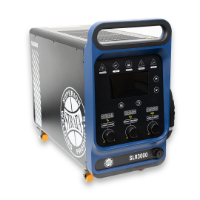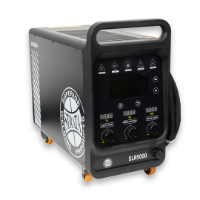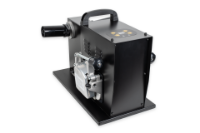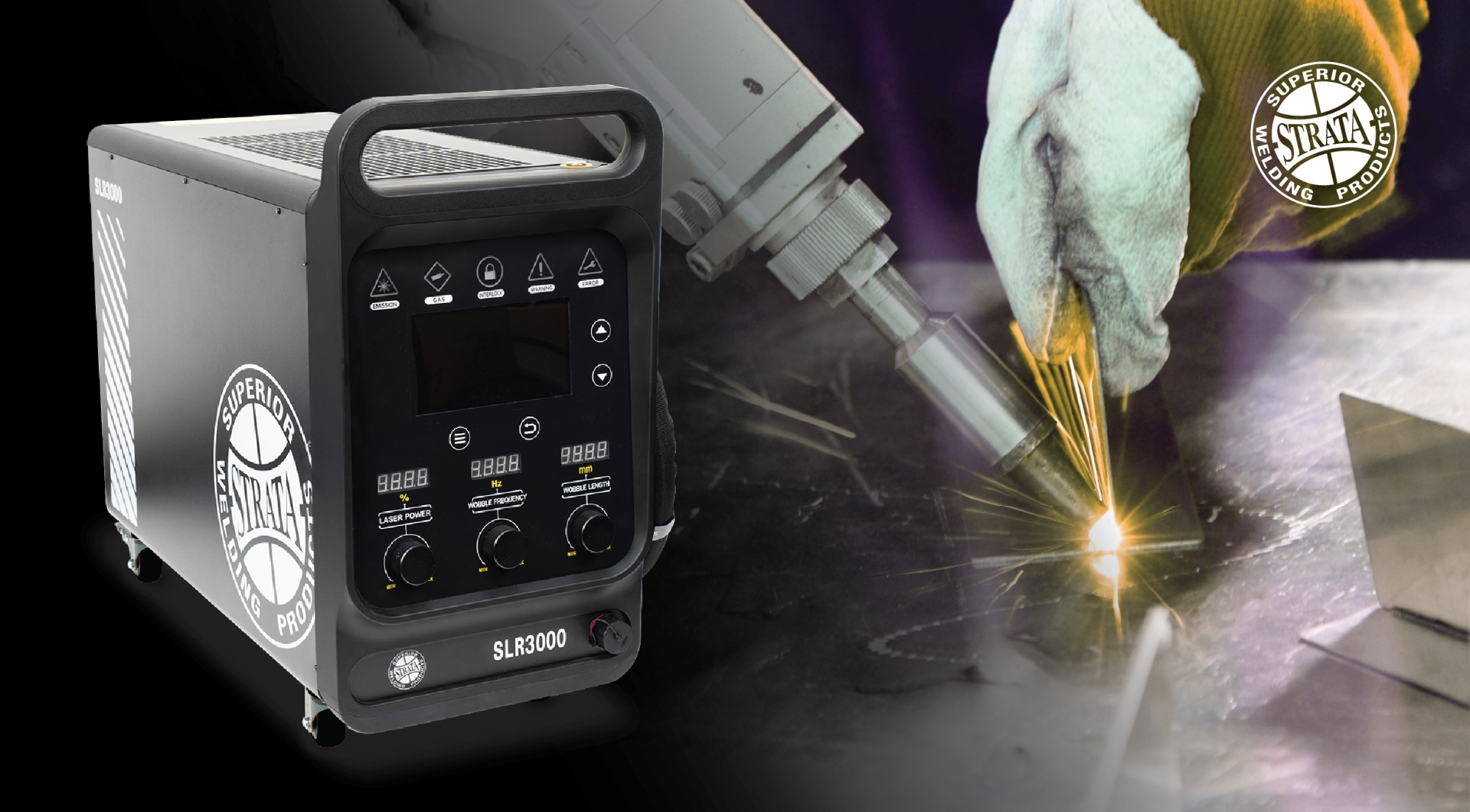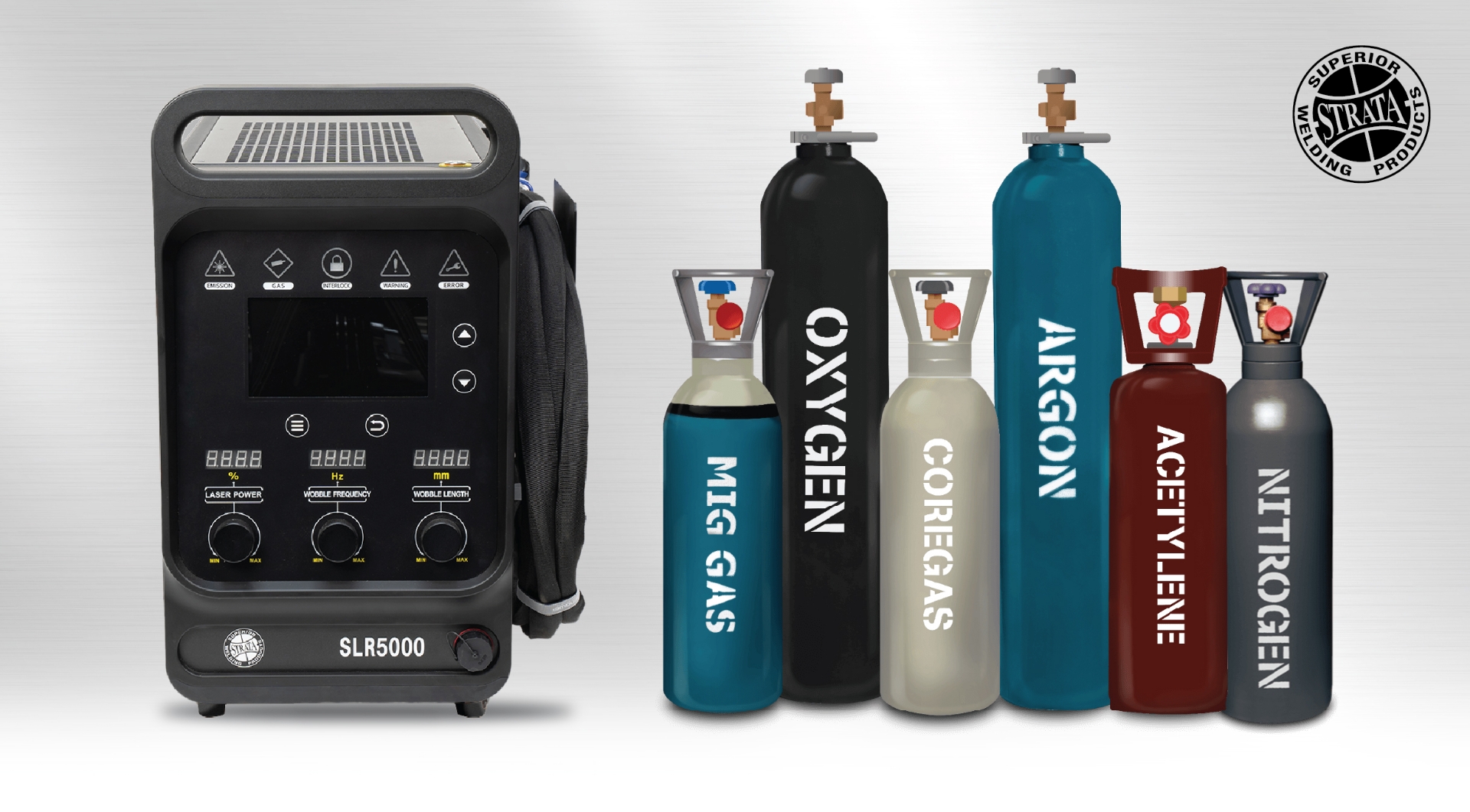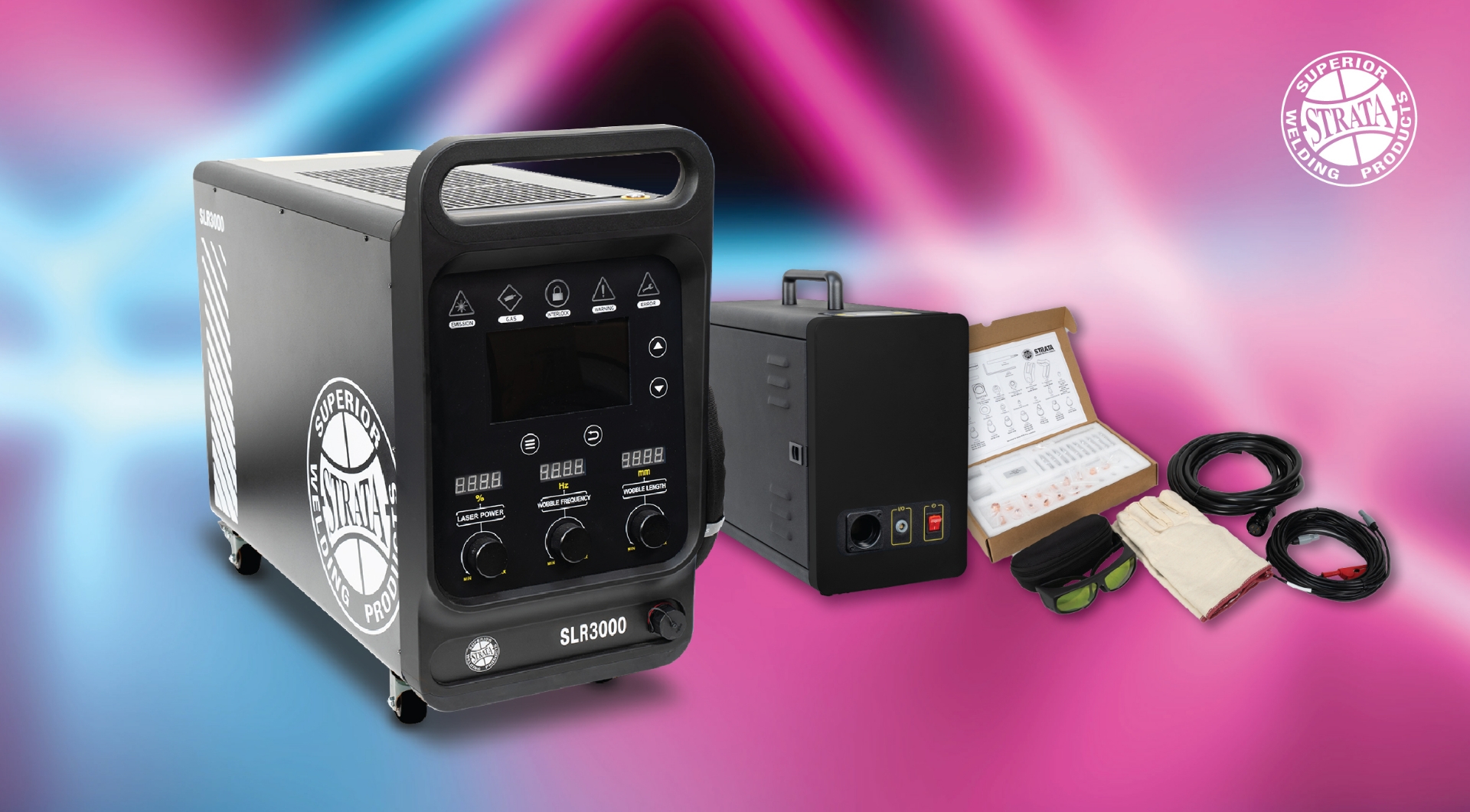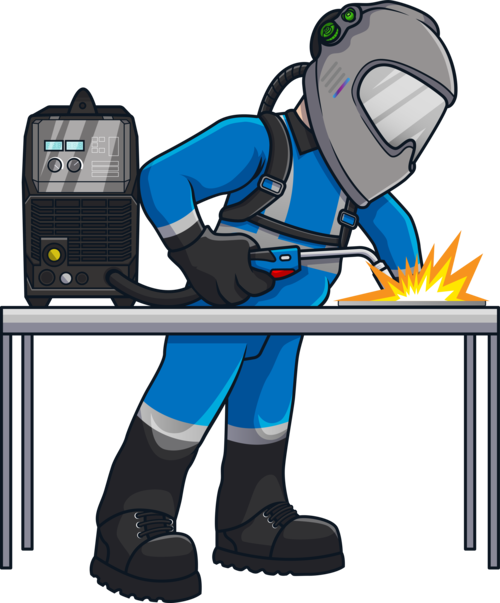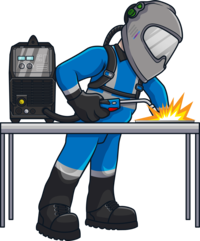Table of Contents
.jpeg)
Welding technology is entering a new era. In fabrication workshops across New Zealand, managers and lead welders are looking for ways to boost productivity and quality without driving up costs. Traditional methods like MIG and TIG have served for decades, but they have limitations – slower speeds, significant heat and fumes, and plenty of post-weld clean-up. Today, an advanced solution is available that addresses these pain points head-on: laser welding.
The Strata SLR5000 Handheld Pro Series Laser Welder exemplifies this advancement. This state-of-the-art machine brings laser beam welding into a compact, portable format suitable for daily industrial use. Combining laser precision with user-friendly design reflects a broader shift in the welding industry towards cleaner, faster, and more adaptable solutions.
This blog post will cover laser welding, how it compares to conventional methods, its typical applications and benefits, and how solutions like the Strata SLR5000 showcase this cutting-edge approach. Whether you're a business owner, workshop supervisor, or hands-on welder, understanding laser welding could help you better decide on future techniques.
What Is Laser Welding?
Laser welding is a process that uses a focused, high-intensity beam of light to join metal parts. The laser's heat source melts the materials at the point of contact, fusing as they cool. Unlike arc-based welding, which relies on an electrical discharge, laser welding provides concentrated heat that can be precisely controlled.
Several types of lasers are used in welding, including fibre, CO2, and disk lasers. Fibre lasers—like the one used in the SLR5000—are popular due to their high energy efficiency, compact size, and ability to deliver a tightly focused beam. The precision of laser welding allows for narrower weld seams, less thermal distortion, and reduced post-processing compared to traditional techniques.
Laser welding is efficient for thin materials and close-fitting joints. It is used in automotive, aerospace, electronics, medical device manufacturing, and metal fabrication industries. Depending on the application, it can be performed manually or integrated into automated production lines.
A Brief History of Welding Methods
Welding has evolved significantly over the past century. Early methods, such as forge welding, were replaced by oxy-acetylene and stick welding in the early 20th century. As technology progressed, MIG (Metal Inert Gas) and TIG (Tungsten Inert Gas) welding became industry standards, offering improved control and the ability to weld various metals.
Laser welding emerged in the 1960s, initially in research and specialised applications. As lasers became more compact and efficient, the technology gradually entered mainstream manufacturing. Today, laser welding is a critical process in many high-tech and precision industries, valued for its speed, accuracy, and ability to work with difficult materials.
Key Advantages of Laser Welding
Laser welding offers several benefits over traditional methods:
- Precision: The focused beam allows narrow welds with minimal heat-affected zones.
- Speed: Laser welding is faster, particularly on thinner materials.
- Clean Results: Welds often require little to no grinding or polishing.
- Low Distortion: Less heat means less warping, which is ideal for sensitive components.
- Automation Ready: Easily integrated into robotic systems for repetitive tasks.
These advantages make laser welding an excellent choice for modern workshops seeking efficiency and consistency.
The Strata SLR5000 in Focus
The Strata SLR5000 Handheld Pro Series Laser Welder demonstrates what modern laser welding tools can offer. Compact yet powerful, it uses fibre laser technology with a small core diameter for deep penetration and high accuracy. It is designed for portability and reliability and includes a dual-circuit cooling system, ergonomic torch, intuitive controls, and an app-based interface.
It can weld various metals, including stainless steel, carbon steel, aluminium, brass, and galvanised materials. With welding thickness capability from 0.2 mm to 9 mm in a single pass, it covers most workshop needs. In addition, the SLR5000 supports wire feeding when required, making it suitable for both autogenous and filler-based welding.
Additional benefits include:
- Reduced shielding gas usage
- 24/7 continuous operation capability
- Minimal fume generation for safer work environments
- Eight built-in safety mechanisms
- Lightweight, ergonomic design (595 grams)
Its multi-functionality extends to laser cutting and cleaning, providing excellent value and flexibility in one unit.
Check out the full features and benefits of the Strata SLR5000 Laser Welder HERE.
Applications of Laser Welding
Laser welding is used across many sectors:
- Automotive: Seam welding panels, battery cases, and exhaust components
- Aerospace: Joining lightweight alloys with minimal distortion
- Electronics: Precision welding of metal casings and connectors
- Medical Devices: Clean, reliable welds in surgical instruments
- Fabrication: Sheet metal work, signage, stainless tanks, aluminium frames
The SLR5000 fits seamlessly into these environments, particularly small to medium enterprises that need efficient, clean welding on-site or in-shop.
Comparing Laser Welding to MIG and TIG
While MIG and TIG welding are well-established, laser welding offers a more advanced alternative for many tasks:
- Speed: Laser welding completes jobs faster, with less heat input.
- Quality: Produces cleaner, stronger welds with minimal finishing.
- Efficiency: Reduces material waste, consumable usage, and labour time.
- Safety: Lowers fume and heat exposure for operators.
That said, MIG and TIG still have a role, particularly for low-budget operations or applications requiring high filler deposition. However, as technology becomes more accessible, laser welding is increasingly viable as a primary method in many workshops.
Post-Weld Processing and Safety Improvements
Traditional welding often requires extensive post-processing, such as grinding, polishing, or chemical cleaning, to make welds presentable. With laser welding, these additional steps are usually unnecessary. The focused heat and minimal spatter reduce the need for clean-up, saving time and labour. This benefit also reduces worker fatigue and improves job satisfaction.
Regarding safety, laser welding minimises many hazards associated with conventional methods. There is no exposed arc, less UV radiation, and fewer harmful fumes. With features like automatic shut-offs, low-voltage triggers, and advanced shielding systems, machines like the SLR5000 contribute to a safer work environment.
Ease of Use and Operator Experience
Despite its advanced technology, the Strata SLR5000 is designed for intuitive operation. With built-in welding modes and app connectivity, setting up the machine is straightforward. Operators can adjust parameters such as power, speed, and storage settings for different materials. The ergonomic torch design also makes it comfortable for long periods of use, reducing strain.
This user-friendliness means that even operators with limited laser welding experience can quickly produce high-quality welds. It bridges the gap between traditional craftsmanship and advanced automation, supporting manual and semi-automated workflows.
Environmental and Cost Benefits
Laser welding is more environmentally friendly than some traditional methods. Reduced energy usage, lower consumable consumption, and minimal waste generation contribute to a smaller carbon footprint. The process's clean nature also limits the need for harsh chemical cleaners or the disposal of hazardous materials.
From a cost perspective, although laser welders can represent a larger initial investment, the long-term savings in consumables, labour, energy, and maintenance are significant. Over time, the efficiency and versatility of machines like the SLR5000 provide a strong return on investment.
Future of Laser Welding
As industries move towards smart manufacturing and automation, laser welding is well-positioned to play a central role. Its compatibility with robotic systems, adaptability to diverse materials, and reliability in continuous production make it ideal for future-ready operations.
Welding technologies continue to evolve, but laser systems are at the forefront of this transformation. As more workshops recognise the advantages, adoption will continue to grow, making laser welding a standard part of industrial practice rather than a specialised technique.
Laser welding is no longer a futuristic concept—it's a practical, reliable solution for today's manufacturing challenges. With its superior precision and speed, it addresses many of the limitations of traditional methods. Adopting laser welding offers a clear path forward for New Zealand workshops seeking to improve output, reduce costs, and maintain high-quality standards. Whether for small fabrication shops or larger industrial operations, it provides a cleaner, faster, and wiser way to weld.
Now is the time to discover how laser welding can transform your operation.
With machines like the SLR5000 making this advanced technology more accessible than ever, the future of welding is here — and it's laser-focused. Contact our team today to learn how laser welding can boost your workshop’s precision and productivity.













































